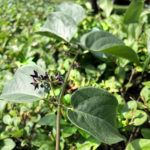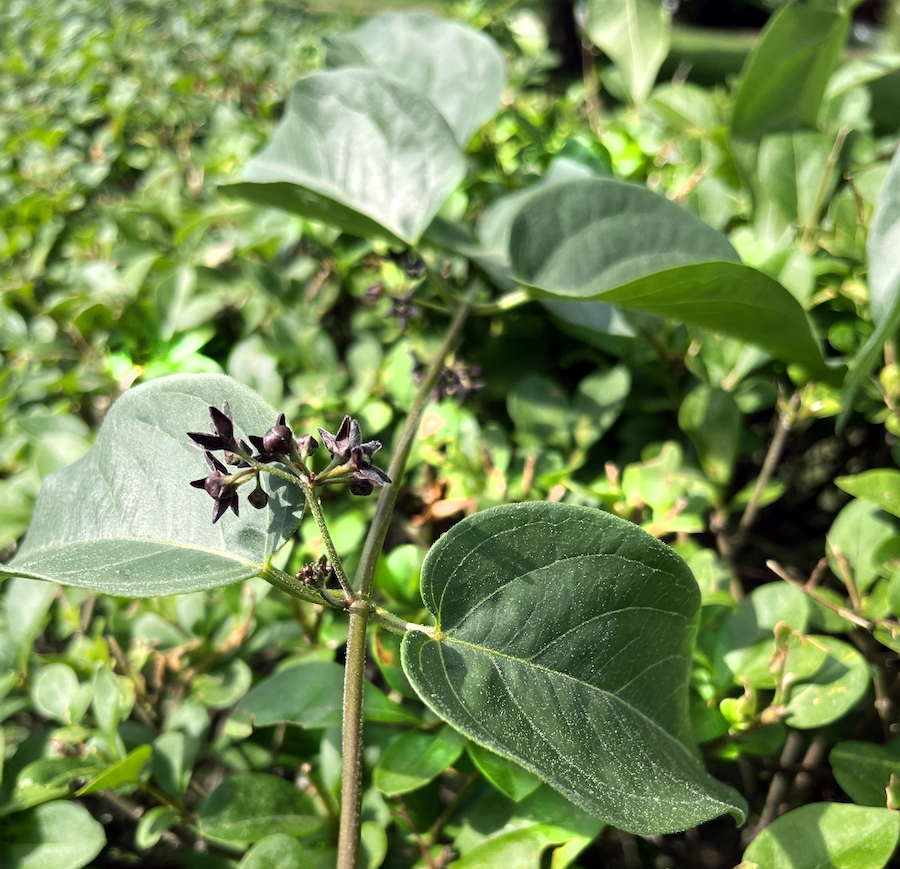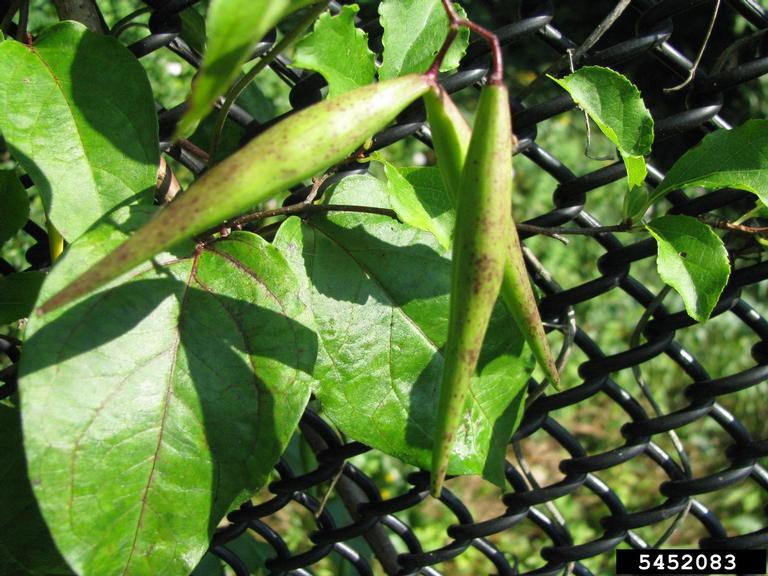
By Jeffrey North
Black swallowwort is a killer. Monarch butterflies mistake the plant for native common milkweed, and lay their eggs in the non-native invader, where the larvae die. Besides threatening the population of migrating monarch butterflies, it is toxic to mammals, and by crowding out food for wildlife, worsens wildlife habitat.
Vincetoxicum nigrum, also known as Louise’s swallowwort or black dog-strangling vine, is a species of plant native to Europe and found primarily in Italy, France, Portugal, and Spain. Black swallowwort was probably introduced to North America as an ornamental plant in the 1800s. The first sighting of Vincetoxicum nigrum in North America was recorded in Ipswich in 1854. In 1864, a plant collector recorded that it was escaping from gardens in Essex County, and by 1867, the fifth edition of Gray’s Manual of Botany stated that it was spreading from gardens in Cambridge, whence it naturalized in Massachusetts and surrounding states. It is still spreading today.
Identification and habitat
The town of Concord describes black swallowwort as “a perennial, twining herbaceous vine in the milkweed family. The leaves are oval shaped with pointed tips; 3 to 4 inches long by 2 to 3 inches wide, and they occur in pairs along the stem. The small, five-petaled, star-shaped flowers are dark purple. The fruits are slender, tapered pods, 2 to 3 inches long by about an inch wide, turning from green to light brown as they mature.”
So what’s the problem?
Black swallowwort is a threat to native species because it crowds them out, reducing habitat and food sources for wildlife, including Monarch butterflies and birds. This invasive species reproduces very prolifically, quickly overtaking various habitats. Most of the possible implications of Vincetoxicum nigrum changing the structure of various ecosystems have not yet been studied. It is found in upland areas in forest understory, pastures, old fields, shores, flood plains, and disturbed areas . . . and in Belmont yards, gardens, open spaces, and along roadsides.
Treatment
The most effective treatment is spot-treating with a selective herbicide, usually by applying the chemical to the recently cut stems of the swallowwort vines. Careful use of herbicides, such as glyphosate or triclopyr, can be effective when applied at flowering time (early June). Repeated applications may be necessary to achieve control. Haphazard use of herbicides could harm other plants nearby. Make sure you always follow herbicide label directions or engage a licensed applicator.
If you opt not to use herbicide, you can hand pull the vines, but the vine has an extensive underground rhizome system which must be completely removed to prevent new shoots from growing. Trying to remove the vine by pulling will often cause the plant to detach from its rhizome, allowing the vine to continue to grow new shoots.
Digging up the rhizomes could be effective if all of the root system is removed, but disturbing the soil could allow other invasives to colonize the area. Areas cleared of swallowwort should be quickly replanted with native groundcover species to reduce the chance of reinfestation. Seed pods must be disposed of carefully (in black plastic bags destined for incineration) to avoid inadvertently spreading the seeds to new areas.
Mowing is another technique used at Rock Meadow and the great meadow at Lone Tree Hill. This method does not eradicate black swallowwort, but it can stop the plants from producing seeds and thus slow the spread of the threat.
Biological management is the use of the vine’s natural enemies to stop the spread and weaken the population of Vincetoxicum nigrum. In the United States, Vincetoxicum nigrum has no natural enemies, but in its native Europe, certain caterpillars, beetles, and diseases attack the plant.
Researchers at Cornell University and the US Department of Agriculture have investigated the use of natural enemies as a way to control the plant, but the use of biological controls is controversial because the implications of adding more nonnative species are unknown.
Overall, early detection and removal are the best management strategies.
Alternatives
The following native vines can serve as a good replacement to black swallowwort in spaces from which it is removed:
- Native honeyvine (Cynanchum laeve)
- Northern bush honeysuckle (Diervilla lonicera)
- Trumpet creeper (Campsis radicans)
- Trumpet honeysuckle (Lonicera sempervirens)
- Dutchman’s pipe (Aristolochia macrophylla)
- Virginia creeper (Parthenocissus quinquefolia)
- Native wisteria (Wisteria frutescens)
Jeffrey North is managing editor of the Belmont Citizens Forum Newsletter, the ex-officio Belmont Conservation Commission representative on the Land Management Committee (LMC) for Lone Tree Hill, and chair of the LMC’s Invasives Working Group.




Sorry, the comment form is closed at this time.